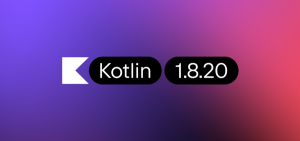Programming language R has been gaining significant popularity among data analysts, statisticians, and data scientists in recent years. This open-source programming language was first developed by Ross Ihaka and Robert Gentleman in 1995 at the University of Auckland, New Zealand, with the aim of providing a tool for statistical computing and graphics. Since then, it has evolved into a powerful language for data analysis, visualization, and machine learning. In this blog, we will explore the various features and benefits of R that make it such an attractive and interesting programming language.
One of the key advantages of R is its flexibility and versatility. R can be used for a wide range of data analysis tasks, from simple data cleaning and visualization to complex statistical modeling and machine learning. This flexibility is due to the vast array of packages that are available for R. Packages are collections of functions and data sets that extend the capabilities of R. There are over 16,000 packages available for R, covering a wide range of domains, including finance, biology, social sciences, and more. This means that no matter what your data analysis needs are, there is likely a package available that can help you.
Another advantage of R is its powerful graphics capabilities. R has a built-in graphics system that allows you to create high-quality plots, charts, and graphs with ease. This is particularly useful for data exploration and presentation. R’s graphics system is highly customizable, allowing you to control every aspect of your visualizations, from colors and fonts to axis labels and annotations.
In addition to its graphics capabilities, R also has a robust set of statistical functions built-in. This makes it an ideal tool for statistical analysis and hypothesis testing. R’s statistical functions are well-documented and have been rigorously tested, so you can be confident in their accuracy and reliability.
One of the most attractive features of R is its active and supportive community. The R community is vast and highly engaged, with users from all over the world sharing their knowledge and expertise through forums, blogs, and social media. This means that if you ever get stuck or need help with a particular task, there are always people who are willing to help you out. The R community is also responsible for developing and maintaining many of the packages that make R such a versatile and powerful language.
Finally, R is open-source and free to use. This means that anyone can download and use R without having to pay for expensive licenses or subscriptions. This makes R an ideal choice for individuals and small businesses who may not have the budget for expensive software.
In conclusion, programming language R is a highly attractive and interesting language for data analysis, visualization, and machine learning. Its flexibility, versatility, powerful graphics capabilities, built-in statistical functions, active community, and open-source nature make it a great choice for anyone looking to work with data. Whether you are a data analyst, statistician, or data scientist, R is definitely a language worth learning.
Advantages
Programming language R has several advantages that make it a popular choice among data analysts, statisticians, and data scientists. Here are some of the key advantages of R:
- Flexibility: R is a highly flexible language that can be used for a wide range of data analysis tasks. Its flexibility is due to the vast array of packages that are available for R, which extend its capabilities to cover a wide range of domains, including finance, biology, social sciences, and more.
- Graphics capabilities: R has a built-in graphics system that allows you to create high-quality plots, charts, and graphs with ease. This is particularly useful for data exploration and presentation. R’s graphics system is highly customizable, allowing you to control every aspect of your visualizations, from colors and fonts to axis labels and annotations.
- Statistical functions: R has a robust set of statistical functions built-in, making it an ideal tool for statistical analysis and hypothesis testing. R’s statistical functions are well-documented and have been rigorously tested, so you can be confident in their accuracy and reliability.
- Active community: The R community is vast and highly engaged, with users from all over the world sharing their knowledge and expertise through forums, blogs, and social media. This means that if you ever get stuck or need help with a particular task, there are always people who are willing to help you out.
- Open-source and free: R is open-source and free to use, meaning that anyone can download and use R without having to pay for expensive licenses or subscriptions. This makes R an ideal choice for individuals and small businesses who may not have the budget for expensive software.
Overall, the flexibility, graphics capabilities, statistical functions, active community, and open-source nature of R make it an attractive and advantageous language for data analysis, visualization, and machine learning.
Disadvantages
While there are many advantages to using programming language R for data analysis, there are also a few disadvantages to consider. Here are some of the key disadvantages of R:
- Steep learning curve: R can be difficult to learn for beginners, especially those without a strong background in programming or statistics. The syntax and structure of R can be quite different from other languages, which can be a challenge for some users.
- Memory management: R uses a lot of memory when working with large datasets, which can make it slow and cumbersome to use. This can be especially problematic if you are working with limited computing resources.
- Lack of standardization: Because R is open-source and has a large community of developers, there are many different packages and functions available, which can lead to inconsistencies in syntax and functionality. This can be confusing for users who are not familiar with the various packages and functions.
- Data security: R’s open-source nature means that there may be potential security risks when working with sensitive or confidential data. It is important to take precautions to ensure that your data is secure when using R.
- Limited support for certain tasks: While R is highly versatile and can be used for a wide range of data analysis tasks, there may be some tasks that are better suited for other languages or tools. For example, R may not be the best choice for large-scale data processing or real-time data analysis.
Overall, while there are some disadvantages to using R, many of these issues can be mitigated with proper training and support. It is important to weigh the advantages and disadvantages of R carefully before deciding whether it is the right tool for your data analysis needs.










